Day 2: Nuances of Taiwanese touring style
On day 2 we got solid proof the Taiwanese do not know how to show visitors the best of their country.
The day started out promising enough, with a stop at a local tea garden & factory with a lovely mountain backdrop. The friendly salesgirl poured 2 types of fragrant and delicious teas for us to try, offering some yummy roasted pumpkin seeds in wasabi/green tea flavor and the even more special "black charcoal." Of course the teas, seeds and delicious shi-ja magi cookies were all for sale as well.
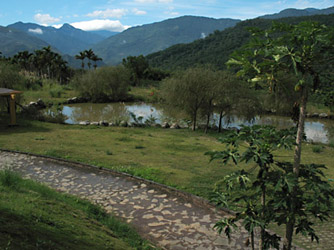 | 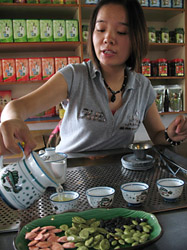 |
Chen Chih-How had run out to purchase a different type of shi-ja fruit, which was much firmer but less Buddha-looking on the outside. Even sweeter than the other type, this type was developed for easier use in cooking and baking. Absolutely delicious with our tea.
Lunch was unique and tasty, sort of a sampler platter of traditional aboriginal dishes from the local A-Mei tribe. Tiny shrimps, snails (which I found too rubbery), fish, bean salad, soup, delicious spare ribs and the special purple rice, which was slightly sticky with a pleasant nutty flavor. We had banana cake and coconut milk tea for dessert, for a total of 390NT (about $11) each.
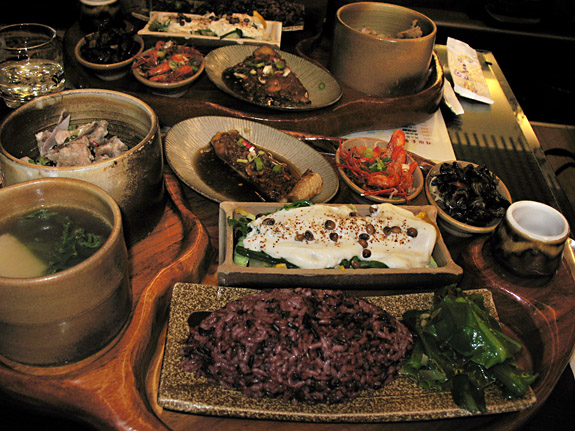
After that, the day went decidedly downhill. We visited a wetlands area which was near the restaurant. Other than some mildly pretty scenery, I had no idea why we were there. Granted, my Chinese ability is middling, but even my parents couldn't really explain the significance of this visit.
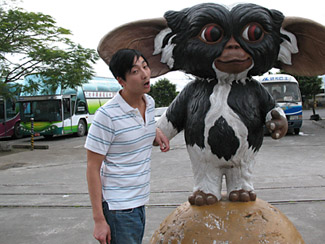 Baffling, and yet...there are tour buses here! Why? |
Next we visited an old lumber factory. Scenery quite nice but still not enough explanation. There was a small museum with a video shown, but since as always, our plan was go go go, we barely had time to walk around the lovely forest. Thus, my main interest ended up being the modern people still living in the area.
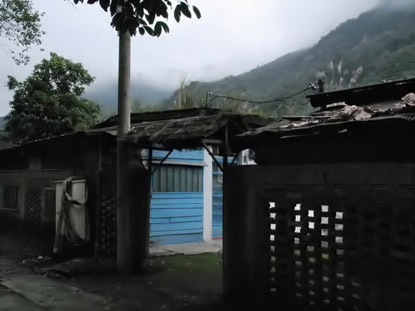 Old loggers' homes |